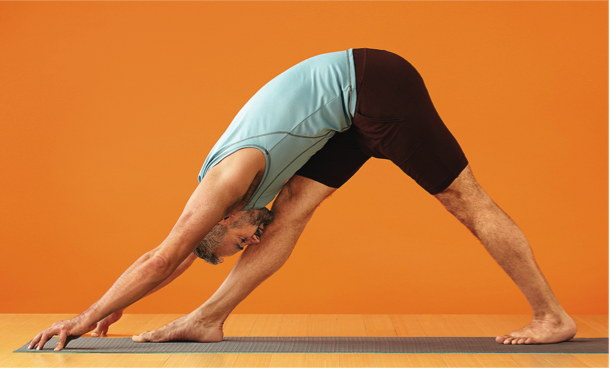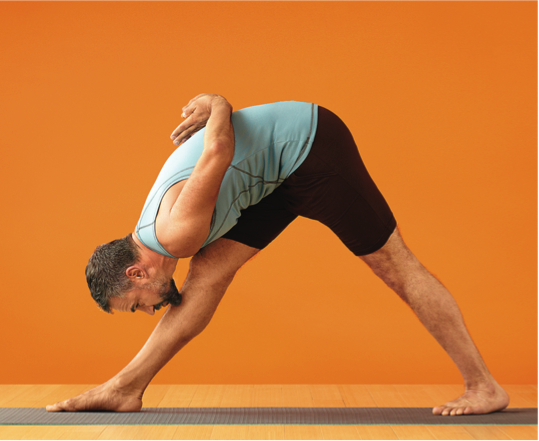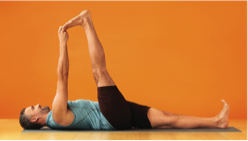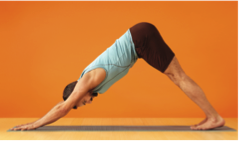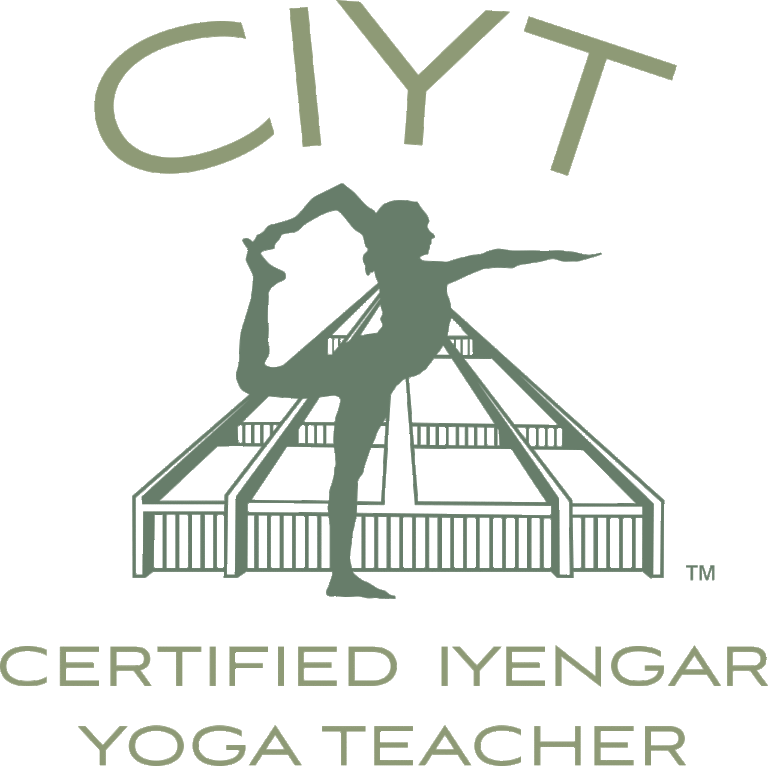
Whether it’s a comment from a stranger, a car cutting you off on the road or an injury, the smallest swipe can throw us off our center. Oftentimes, we feel the need for a protective sheath to shield us from the unknown. The first two limbs of astanga yoga offers us a guide for how to create healthy boundaries without hardening ourselves.
The five yamas (precepts of social discipline and self restraint) and the five niyamas (observances of individual discipline) help create a framework for how to behave in our relationships with ourselves and the world around us. Together, they not only create the foundation upon which the entire yoga practice is built, but offer guidance for how to interact with the ever changing set of circumstances of our inner and outer lives. It is through mindfulness of how we react to the world and beings around us that the distinction between inward and outward behavior is dissolved.
When we lack clarity in our boundaries with others, we oftentimes become inwardly rigid with fear because all interactions become a minefield of unknown possibilities. As ironic as it may sound, practicing disciplines that read like rules and behavioral restrictions can set us free. Developing a firmness and clarity in our actions and reactions allows us to be fluid, creative, and truly in the moment.
Not harming, not stealing, not objectifying, not craving are a lot of “nots,” a lot of pitfalls to avoid. While commentators are quick to point out that the yamas are practiced in thought as well as deed, it is clear that putting them into practice requires thoughtful consideration. These commandments speak as much to the intention and internal process behind our actions as they do the actions themselves. To process the yamas throughout our daily lives is to create a framework to structure and govern all of our actions and interactions.
If it is the purpose of yoga to reveal our true unpolluted Self, then the foundation of the practice in yama and niyama helps to peel off the greedy, dishonest, craving veil with which we mistakenly identity. Once we no longer have to dance to the tune of the deluded self and are acting (even if at first it really only feels like acting) as a liberated and purified being, we are free to follow our truth. And the beauty is that we become free to see the truth in others and interact with them accordingly. From there, the bounds of our creativity are limitless.
Forward bends and especially Parsvottanasana are a perfect place to experiment with creating boundaries of firmness to find inner freedom. Forward bends can be some of the most calming and quieting asanas. They take us inward and offer refuge from outside stimulation. Yet, to achieve the peace and surrender that comes with bending forward, we need to have a frame from which to hang ourselves. Even those who, because of natural flexibility, can bend forward with ease are challenged by the stability required in Parsvottanasana.
Because the legs are in line with each other, facing the same direction and the torso extends over the front leg, the correct alignment forces us to balance as if walking on a tight rope. In the classic version of Parsvottanasana, the arms are behind the back in Paschima Namaksarasana leaving us to navigate the balance from our feet and legs alone. Although we rely on the firmness of our legs in order to stabilize ourselves in this standing pose, we also require fluidity in our legs and inner body to maintain the correct alignment. Fear of falling can cause us to become rigid in the torso and back leg, which actually pulls us out of the pose. However, when we can balance between the actions of drawing up through the feet and thighs with rotation and surrender, we can experience a release in the hips and spinal muscles that takes us deeper into the asana.
This pose helps prepare the hamstrings for the strong stretch of Parsvottanasana while teaching the same hip alignment. The leg on the floor is like the back leg of Parsvottanasana.
Lie down with the backs of both thighs touching the floor evenly. Bend the right knee towards your chest and catch hold of the big toe with your index and middle fingers fingers. If you can’t reach or your legs bend, hold a belt around the right foot. Keep your left leg straight with the thigh down on the floor. You may have to turn the top of the left thigh inwards so that the inner thigh remains down. The top back of the left thigh, near the buttock should feel like it is spreading from the inner thigh towards the outer thigh.
Straighten your right leg and press the front of your right thigh away from your chest towards the back of your leg. Pull the root of your right thigh down into the hip socket into the floor and lengthen the hip away from your head. It should feel like the right side of the waist is as long as the left.
Maintaining the alignment of your hips and legs, lengthen your abdomen towards your chest and see if you can increase the stretch of your right leg. The more you bring the right foot towards your head, the more you have to pull the right hip down into the floor and move the hip away from your head. The frame of the outer shape of the pose will set the parameters for you to know how far you can safely extend.
Bend the right knee, release your foot and straighten both legs on the floor before doing the second side.
Parsvottanasana is like a one legged version of Downward Facing Dog Pose. The legs and feet work in a similar manner to the back leg of Parsvottanasana. Place and spread your palms shoulder width apart on the floor. Straighten your arms and walk your feet back. Keep the feet in line with the hands. Start with the heels slightly raised (not so high that all of the weight comes onto the toes) and lift the buttocks towards the ceiling. Pressing the balls of the big toes into the floor, spread the balls of the toes from the big toe towards the ball of the little toe. Lengthen the arms and extend from the shoulders to the side ribs to the outer hips. Lift the frontal thighs up as if you are pulling your thigh-bones into your hip sockets. From your arms and legs, lift the pelvis and hips higher.
Now broaden the backs of your thighs. Open the area at the top hamstrings (just below the buttocks) up towards the ceiling and out to the sides. You should be able to feel the length of your inner legs here. As you raise your hip sockets, observe how you have more space to lengthen your abdomen and pelvis up away from your head. Maintain the height and width of your top hamstrings as you start to lower your heels towards the floor. Keep the inner legs long and press the fronts of your thighs further back away from your torso as you lengthen the calves towards the heels towards the floor. As the heels descend, reach the heels straight back away from your hands. Lengthen the inner edges of the feet from your inner arches towards the inner heels.
On the inhalation, stretch your inner arms and open the sides of the chest. Keep the limbs sharp, long and lifting upwards. It should feel llike the entire outer structure of the pose is fully extended so that the inner body can enjoy all of the space you’ve created. Exhale and lengthen your chest towards your abdomen and your abdomen away from your chest. Keeping the height of your hips and pelvis, relax your neck and release the crown of your head down towards the floor.
Then bend your knees and on the exhalation, release your knees and head to floor into Adho Mukha Virasana.
Like Parsvottanasana, the torso is extended over the front leg in a standing position. However, since you are bending laterally over the leg in this asana, balance is easier.
Spread your legs and arms wide apart so that with your arms stretched straight out in line with your shoulders, the feet are underneath your hands. Turn your feet to the right and align the right heel with the arch of your left foot.
Press the ball of your right big toe into the floor and turn the top of your right thigh out as you pull the thigh up towards the hip. Although the entire thigh gets drawn upwards, you should feel the muscular control of the action in the upper outer and front thigh.
Press the outside edge of your left heel into the floor and press the front of the left thigh to the back of the leg. Without losing the firmness in the feet and legs, extend the sides of your waist and chest to the right directly in line with the right leg. Although balance isn’t as challenging in this asana as in Parsvottanasa, you may find yourself leaning slightly forward. If so, take the outer edge of your right hip in and forward while keeping the left leg and shoulders back, in line with the right leg. It should feel like the firmness around the right outer hip is stabilizing the entire pose so that the front of your body can unfold as you open your chest towards the ceiling. Move your shoulder blades in towards the chest and revolve the front of your torso from right to left. It is as if the firmness of your back body is like a wall supporting you. Resting on the wall of your back body, you have the freedom to revolve and open in the front like a blooming flower.
Press into your outer left heel, pull up with your left arm and stand up. Repeat on your left side.
PARSVOTTANASANA (HANDS ON FLOOR)
In this variation of Parsvottanasana, you have the opportunity to practice all of the stabilizing and fluid actions without fear of falling. With your hands on your hips, spread your legs wide apart and turn your legs to the right. Align the heel of your right foot with the arch of your left foot. As you turn the right foot out, turn the entire thigh out like in Trikonasana. Raise the left heel slightly off the floor and pressing into the ball of the big toe, turn the front top of the thigh inwards. Lengthen the inner edge of the foot from the arch back towards the inner heel as you place the heel back on the floor.
Turn your pelvis to face over the right leg. Revolve your outer left thigh forwards. Straighten both legs and press the front of your left thigh back towards the back of the leg without losing the rotation of the leg.
Lift the sides of your chest and look upwards towards the ceiling. Put more weight on your left leg and press into the heel. Extend your torso over the right leg and place your hands on the floor on either side of your right foot. If you can’t reach the floor while keeping your legs straight, use a block under each hand.
Press the ball of the right big toe down and pull the right thigh up into the hip socket. Lift the right buttock up towards the ceiling like you did in Adho Mukha Svanasana as you cut the outer edge of your hip back. Turn the back of your left leg from inside out. The left top hamstrings (just below the buttocks) should turn away from the right leg. Keeping the right leg and outer hip firmly pulling up, allow the left outer thigh to flow forward. It literally should feel like the skin of the outer thigh and hip is flowing like a stream of water over the muscle and forward towards the floor. This rolling and flowing quality is possible because of the support of the front leg and stretch of the back leg.
Extend the sides of your waist, ribs and chest forward and then lengthen the front of your torso over the right leg. The more you turn the back leg, the more you can bring the left side of your torso to the right leg.
Press down on the back of your left heel, inhale and stand up. Turn your feet forward and then to the left to do on your second side.
Join your hands behind your back in Paschima Namaskarasana or reverse Namaste. If you aren’t able to get your hands into this position, then hold your elbows behind your back. Walk your little fingers up your back. Lift the sides of your chest and your inner armpits and roll the outer corners of your shoulders back. Rotate your inner biceps out and from the elbows press your palms and index fingers against each other.
Separate your feet wide apart and turn your legs to the right. Align the heel of your right foot with the arch of your left foot. Again, press the balls of your big toes into the floor and lengthen the inner edge of your left foot from the arch of the foot back towards the inner heel. Spread the balls of the toes on the left foot from the big toe towards the little toe. The action in the foot helps to lengthen the inner leg and get the rotation of the left thigh. Turn the front of your left thigh from outside in. The outer edge of your left thigh and hip should roll forward as the back of the thigh turns from inside out. Don’t hold the left outer leg rigid but let it continue to flow forward as the inner leg lengthens.
Lift your abdomen towards your chest and your chest towards the ceiling as you lift your head and look upwards towards the ceiling. Without arching the lower back, take your shoulders further back and lift your sternum. In this stage, you can press more weight into the left heel as you press the front of your left thigh further back.
Exhale and lengthen the front of your torso over the right leg. As you extend forward, keep turning the left outer thigh and hip forward. Pressing firmly on the ball of the right big toe, pull the outer edge of the right leg up and back. Turn the back of the left leg from inside out.
In order to keep your balance, you may notice that you’re tightening the inner edge of your left foot and the left buttock. In the process, your abdomen and neck may have also shortened and tightened, which pulls you out of the pose. Instead, see if you can bring firmness and stability to your right leg and outer hip. Lift the right buttock and outer hip higher as you turn the left thigh more. Keep reaching the left inner heel back and broadening the balls of your toes from the big toe towards the little toe. Roll the skin of the outer thigh and hip forward and down as you did when you had your hands on the floor in the previous variation.
Once the back of the left leg and buttock turn away from the right, you can start to release the left side of your waist downwards towards the floor and towards the right leg. The abdomen also becomes free to extend. Turn your navel to the right and lengthen your abdomen to the chest towards your right foot. Lengthen your chest along the right leg and release your head to the shin.
Bring yourself even deeper into the practice by fully committing to the firmness of the outer structure. The discipline of maintaining the frame of the pose will liberate you to find an inner release, softness and surrender. Have faith that the strong boundaries that you’ve created through alignment and clarity of action will allow you to abide in your abundant freedom. The worst thing that can happen is you lose your balance and have to put your hands back on the floor. So go for it!
To come out of the pose, press into the back of the left heel and inhale raise your torso back to an upright position. Lift the chest again towards the ceiling and then turn your feet to repeat on the left side.
CAPTIONS:
Lie down with the backs of both thighs touching the floor evenly. Bend the right knee towards your chest and catch hold of the big toe with your index and middle fingers. If you can’t reach or if you can’t straighten your legs, hold a belt around the right foot. Keep your left leg straight with the thigh down on the floor. Straighten your right leg and press the front of your right thigh away from your chest towards the back of your leg. Pull the root of your right thigh down into the hip socket into the floor and lengthen the hip away from your head.
Bend the right knee, release your foot and straighten both legs on the floor before doing the second side.
Place your hands shoulder width apart and your feet in line with the hands. Start with the heels slightly raised and lift the buttocks towards the ceiling. Lengthen the arms and extend from the shoulders to the side ribs to the outer hips. Lift the fronts of your thighs up as if you are pulling your thighbones into your hip sockets and broaden the backs of your thighs, especially the top hamstrings. Maintain the height and width of your back thighs as you stretch your heels back and down. Press the fronts of your thighs further back away from your torso as you lengthen the calves towards the heels towards the floor.
Exhale and lengthen your chest towards your abdomen and your abdomen away from your chest. Keeping the height of your hips and pelvis, relax your neck and release the crown of your head down.
Spread your legs wide apart and turn your feet to the right. Press the ball of your right big toe into the floor and turn the top of your right thigh out as you pull the thigh up towards the hip. Press the outer left heel down and left thigh back. Without losing the firmness in the feet and legs, extend the sides of your waist and chest to the right directly in line with the right leg.
PARSVOTTANASANA (HANDS ON FLOOR)
As you turn the feet to the right, turn the entire thigh out like in Trikonasana. Raise the left heel slightly off the floor and pressing into the ball of the big toe, turn the front top of the thigh inwards. Lengthen the inner edge of the foot from the arch back towards the inner heel as you place the heel back on the floor. Extend your torso over the right leg and place your hands on the floor on either side of your right foot on the floor or on blocks. Pull the right thigh up into the hip socket and turn the left thigh inwards.
PARSVOTTANASANA
Join your hands behind your back in Paschima Namaskarasana or reverse Namaste. Keep your feet in line with each other as you lift your chest and look up towards the ceiling. Exhale and lengthen the front of your torso over the right leg. As you extend forward, pull the right thigh up and turn the left outer thigh and hip forward. Pressing firmly on the ball of the right big toe, pull the outer edge of the right leg up and back. Turn the back of the left leg from inside out. Lengthen your chest along the right leg and release your head to the shin.



